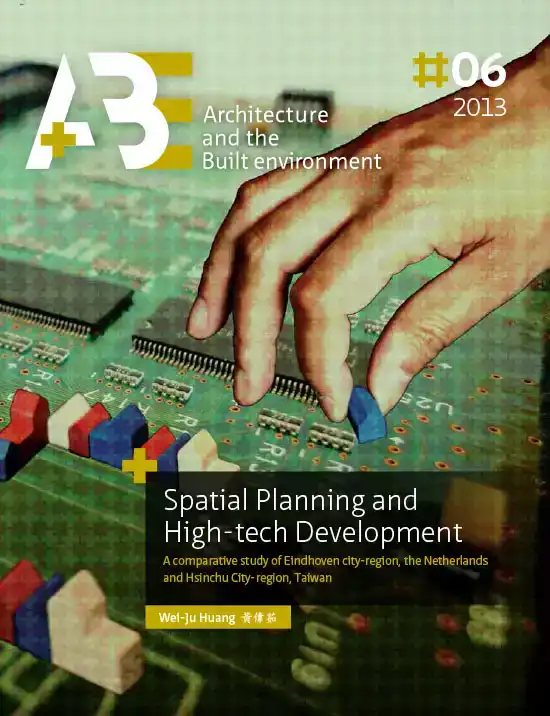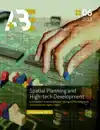- Engels
- Pockets
- kunst algemeen
- bouwkunst, archit.
- SPATIAL PLANNING AND HIGH-TECH DEVELOPMENT
HUANG, WEI-JU
SPATIAL PLANNING AND HIGH-TECH DEVELOPMENT
39,95incl BTW
Vertrouwd sinds 1927
Persoonlijke aandacht en advies
Vanaf 17,50 gratis verzenden NL & BE
Meer dan 150.000 artikelen online
Omschrijving SPATIAL PLANNING AND HIGH-TECH DEVELOPMENT
High-tech development-which lies at the very heart of the processes of economic growth-has been recognised by many developed and developing countries as a strategic instrument to enhance and sustain their competitiveness in the global economic networ
k. Although the concept of high-tech development differs between countries, many share the underlying assumption that the core of high-tech development is to create a sound environment where innovation thrives. This ideology implies a definite spatia
l dimension. As a result, various spatial strategies have been formulated and implemented to support high-tech development. This has had intentional and unintentional effects on the economy, society and space.
Numerous studies have been devo
ted to exploring, analysing and theorising this global phenomenon. However, there has been less attention given to the role spatial planning may play in the process of high-tech development and to the factors that shape the spatial planning approache
s to high-tech development in a particular place. The major objectives of this research are to advance the knowledge of the role of spatial planning in the process of high-tech development, and to establish an analytical framework that helps reveal t
he major institutional factors that shape spatial planning mechanisms for dealing with the spatial issues of high-tech development in different places. This contributes to the field of high-tech spatial policies transfer and lesson-drawing.
In order to explore the major factors that shape the practices of spatial planning in hightech development, a comparative approach is applied in this research. The Eindhoven city-region in the Netherlands and the Hsinchu city-region in Taiwan are sel
ected as case study areas. Both city-regions can be recognised as success stories of high-tech development not only on a national scale but also on a global scale, despite the fact that they apply different approaches. In the Eindhoven city-region, t
he governments act as supporters and governors. High-tech development in the city-region is a result of close collaboration between different levels of government and other parties. In contrast, in the Hsinchu city-region the governments act as provi
ders in high-tech development.
By critically reviewing relevant literature, the research begins with the identification of principal components of high-tech development and their spatial dimensions, and with the establishment of a set of com
parative frameworks, which are built upon the concepts of institutionalism and previous comparative studies of spatial planning systems. On the basis of the frameworks, the comparative study is conducted.
k. Although the concept of high-tech development differs between countries, many share the underlying assumption that the core of high-tech development is to create a sound environment where innovation thrives. This ideology implies a definite spatia
l dimension. As a result, various spatial strategies have been formulated and implemented to support high-tech development. This has had intentional and unintentional effects on the economy, society and space.
Numerous studies have been devo
ted to exploring, analysing and theorising this global phenomenon. However, there has been less attention given to the role spatial planning may play in the process of high-tech development and to the factors that shape the spatial planning approache
s to high-tech development in a particular place. The major objectives of this research are to advance the knowledge of the role of spatial planning in the process of high-tech development, and to establish an analytical framework that helps reveal t
he major institutional factors that shape spatial planning mechanisms for dealing with the spatial issues of high-tech development in different places. This contributes to the field of high-tech spatial policies transfer and lesson-drawing.
In order to explore the major factors that shape the practices of spatial planning in hightech development, a comparative approach is applied in this research. The Eindhoven city-region in the Netherlands and the Hsinchu city-region in Taiwan are sel
ected as case study areas. Both city-regions can be recognised as success stories of high-tech development not only on a national scale but also on a global scale, despite the fact that they apply different approaches. In the Eindhoven city-region, t
he governments act as supporters and governors. High-tech development in the city-region is a result of close collaboration between different levels of government and other parties. In contrast, in the Hsinchu city-region the governments act as provi
ders in high-tech development.
By critically reviewing relevant literature, the research begins with the identification of principal components of high-tech development and their spatial dimensions, and with the establishment of a set of com
parative frameworks, which are built upon the concepts of institutionalism and previous comparative studies of spatial planning systems. On the basis of the frameworks, the comparative study is conducted.
Specificaties
- MerkBK Books
- GroepKUNST ALGEMEEN (640)
- Barcode9789461861979
- LeverstatusActief
Reviews
0.0/5.0
Gemiddelde uit 0 reviews
Meest behulpzame reviews
Nog geen reviews geschreven


